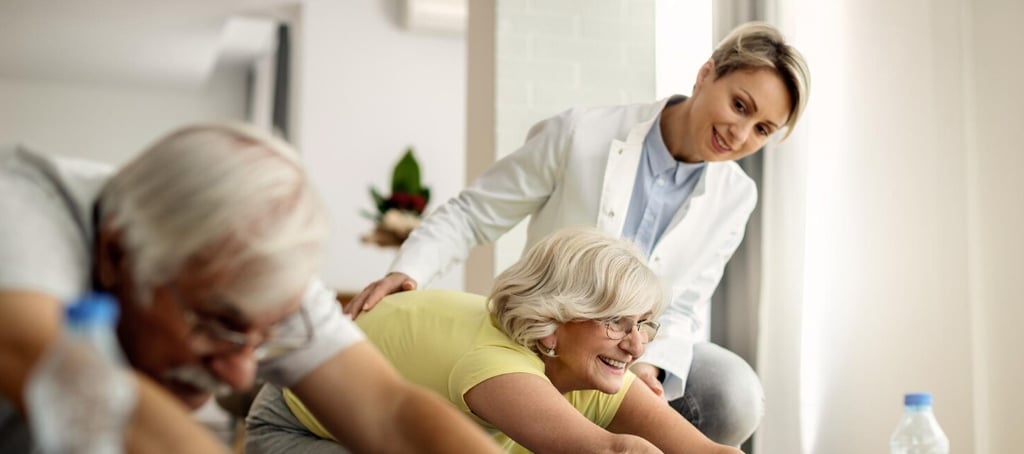Caregivers’ Practical Guide to Managing Senior Pain at Home
If you’re a caregiver, you know that chronic pain is a common and challenging companion for many seniors. This practical, at-home guide focuses on safe, effective strategies that caregivers can implement to ease daily discomfort, improve mobility, and support better quality of life. By combining simple routines, smart precautions, and evidence-based practices, you can help your loved one manage pain at home with confidence.
PERSONALIZED CARE
Erlyn A. Pinkston
8/11/20252 min read


Why at-home pain management matters
Aging bodies often experience musculoskeletal changes, arthritis flare-ups, neuropathic pain, and post-surgical soreness.
Home-based strategies promote independence, reduce hospital visits, and empower both seniors and caregivers.
A proactive plan improves communication with healthcare providers and supports safer, more consistent relief.
Key steps for effective at-home pain relief
Create a pain-management routine
Assess daily pain levels using a simple scale (0–10) at several times of the day.
Schedule consistent activities that promote movement without overdoing it: gentle stretching, short walks, and light resistance exercises.
Track triggers and relief: note meals, sleep quality, weather, and activity on your care plan.
Gentle, evidence-based physical activity
Low-impact exercises: chair yoga, tai chi, or water-based movements if possible.
Focus on mobility, flexibility, and strength to reduce pain and improve function.
Always start slow, with warm-up, and stop if pain worsens or unfamiliar symptoms arise.
Heat and cold therapy
Heat (15–20 minutes) can relax muscles and soothe stiffness; use a warm towel, heating pad, or warm bath.
Cold packs (15–20 minutes) help reduce inflammation after activity or injury.
Alternate with caution: protect sensitive skin and avoid applying directly to broken or irritated skin.
Pain relief medications (with guidance)
Use over-the-counter options only as advised by a clinician and with clear dosing schedules.
Be mindful of drug interactions, especially with heart, blood pressure, or diabetes medications.
Keep a current list of all prescriptions, supplements, and dosages for quick reference.
Non-drug pain relief techniques
Pacing and energy management: break tasks into manageable chunks with regular rest.
Relaxation methods: deep breathing, guided imagery, and mindfulness can lessen perceived pain.
Distraction strategies: music, hobbies, or social activities can reduce pain perception.
Sleep and pain
Prioritize a regular sleep routine; poor sleep amplifies pain sensitivity.
Create a calming bedtime environment: a cool room, a comfortable mattress, and limited screen time before bed.
If sleep issues persist, consult a clinician for assessment and adjustment of treatment plans.
Nutrition and hydration
Balanced meals support overall health and can influence inflammation and pain.
Hydration is essential; dehydration can worsen dizziness and fatigue that amplify pain.
Consider anti-inflammatory foods (e.g., fatty fish, leafy greens, berries) as part of a physician-approved plan.
Home safety to prevent pain-related injuries
Remove trip hazards: clear clutter, secure loose rugs, and install grab bars in bathrooms.
Use assistive devices: cane, walker, or ergonomic tools to reduce strain.
Modify the home environment for comfort: ergonomic seating, easy-to-reach storage, and proper lighting.
When to seek professional help
Pain worsens or disrupts daily activities despite a home plan.
New symptoms appear: numbness, weakness, sudden changes in balance, or fever.
Regular check-ins with a primary care physician or pain specialist help tailor plans and adjust therapies safely.
Practical caregiver tips
Collaborate: Discuss the care plan with family, healthcare providers, and the senior to ensure goals align.
Document: Maintain a pain diary noting intensity, location, triggers, medications, and responses.
Communicate clearly: Use simple language and validate feelings; pain is real, and comfort matters.
Be patient: Gradual improvements are common; celebrate small gains to stay motivated.
At-home pain management is a partnership between the caregiver and the senior. Begin with a straightforward routine, prioritize safety, and consult a professional when necessary. With consistency and care, you can reduce discomfort, support daily function, and promote a higher quality of life for your loved one.


Our Links
Mailing Address
P.O. Box 115 Garden Grove
CA 92842-115
